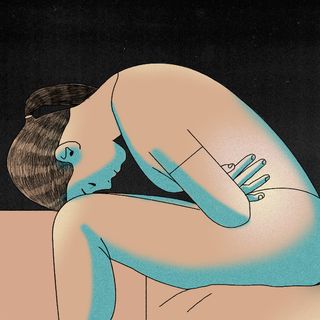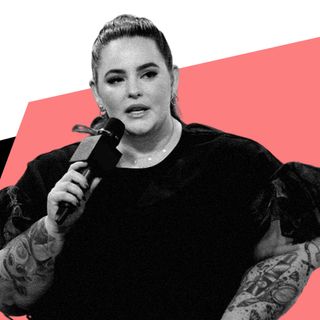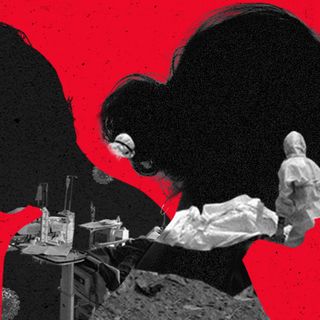
Indians Living Abroad Are Feeling Grief, Despair. Many Are Using The Internet to Help.
“I just don’t know how to even begin processing this. All I can do is what I’m doing now.”

It is particularly unnerving to open my Instagram as I sit in a crowded restaurant — maskless and unworried — with my group of fully vaccinated friends in New York. Back home in India, my friends and family are posting desperate pleas for oxygen, medication, hospital beds, nurses, funeral services, cremation appointments. With a healthcare system that has completely collapsed and a government that won’t take accountability, every second post from India seems to be a cry for help. Sitting halfway around the world, I feel nothing but numb and helpless.
India’s grim, escalating Covid19 catastrophe has made global headlines and garnered significant international attention, but people on the ground are still scrambling to clutch all resources at their disposal.
As this chaos, grief, and anger unfolded steadily in India, so too, did fear and anxiety for Indians like me outside the country, terrified for our loved ones’ safety and frustrated at our inability to help as horror stories came pouring in. Like me, many are faced with the dissonance of living in countries that are effectively vaccinating and safeguarding their citizens, while watching their own country turn a blind eye to the plight of its people.
For Indian students and workers overseas only temporarily, the emotional toll of being thousands of miles away from their immediate families has been particularly devastating during the virus’s desperate second wave. “My grandfather has Covid19, and it’s terrifying. So many others in my family are hospitalized. I feel so helpless and shitty to be away from home right now,” said Trisha, a recent university graduate working in Boston. “I have so much guilt because I am vaccinated and in a safer place, but so many people don’t have the choice or privilege to do that.”
The response from Indian communities abroad has been powerful. They took to social media with fervor: mobilizing resources, sharing information, making donations, and amplifying critical voices being stifled in India. Trisha, too, spent several days raising money for organizations she researched thoroughly and encouraged people to donate by matching their donations, reaching a total of more than USD 1,000.
For years, so-called ‘armchair activism’ – people posting ‘woke’ content on social media in lieu of otherwise tangible change-making — has been hotly debated on the Internet. Some say it serves no purpose other than to make the ‘activists’ feel better about themselves or even to capitalize on the work of grassroots organizers; others argue that traction of all kinds, even one stemming from digital natives, has the potential to lead to positive change. With the pandemic restructuring the way society functions fundamentally — catapulting all human interaction into the virtual realm — the global social media response to India’s escalating crisis brings a new perspective to this debate.
Related on The Swaddle:
We Asked Young Indians How They’re Coping With India’s Second Covid19 Wave
“I think people abroad are, by default, looked at more seriously, and more of a threat to the government because they have a much greater reach outside of India,” said Chinmay Rayarikar, a student from Mumbai currently completing a Master’s degree at Oxford University in the U.K. “The people in power in India are not even acknowledging that there is a problem. Their response has been to manage the publicity. It’s like there is absolutely zero value to people’s lives.”
Although perhaps not a direct consequence of social media activism on the part of Indians abroad and the diaspora, the international attention that the ruling government, Bharatiya Janta Party (BJP), received for its neglectful failure in containing Covid19 is crucial. It helped create a positive feedback loop — the greater the global media coverage, the more people that got involved to help.
“At this stage, each bit of activism can end up saving people’s lives,” said Rayarikar. “So, I don’t care if someone is sitting in India or halfway across the world as long as they are doing whatever in their power to help.”
While the global effort has been remarkable, and speaks as much to the failures of the Indian state as commendable individual feats, it still follows the same power structures that define it — with only some exceptions. The most vocal of both Indian society and the diaspora are people from predominantly upper-caste, upper-class households, who are perhaps not used to being hit so hard. As a result, much of the social media activism, general anxiety, and concern remain concentrated among families with relative privilege — people who had the access and ability to engage on the internet, to find connections within their social circles that helped them avail lifesaving resources. Social media and consequent networking inevitably end up excluding those communities disproportionately affected by the pandemic in the first place.
“Throughout the pandemic, and even now, there has been some focus on assisting household help, like making sure they’re getting their salaries and Covid tests,” said Madhavi Narayanan, an Indian-American law student currently residing in Chennai. “But beyond that, how many NRIs check in with the help’s families to see if they are safe? How many people make sure their help’s kids have access to phones for internet learning? What about Dalit cremation workers who are taking on a relentless and brutal workload? How much are their lives being advocated for?”
The Indian diaspora has been criticized in the past for its apathy and complicated political relationship with India, and the response to the Covid19 crisis has thus been met with mixed feelings. While many are happy to see a rise in the level of engagement, the question that remains is whether that engagement is deep enough. For one, lots of people in the diaspora have donated lakhs of rupees to the Rashtriya Swayamsevak Sangh (RSS)’s ‘Seva Vibhag,’ the charity and social service wing of the right-wing, Hindu nationalist paramilitary organization tied to the BJP. While they are still working to provide relief to some people, the inherent contradiction is hard to ignore.
“If there was a hurricane in the U.S., most progressive Americans wouldn’t exactly donate to a relief fund run by white supremacist groups like the Proud Boys, right? It’s the same concept here,” said Narayanan. For Indians currently separated from their families by thousands of miles, efforts to help are more intentional.
“I know that there are organizations out there doing really good work that we should be supporting,” says Trisha. “I wanted to encourage others to donate, so I broadcasted that I’d match their donations. A lot of my friends asked me where to do so, so I think it made people more comfortable when I put up a list for them. I researched the organizations thoroughly online and through word of mouth and personal experiences of people I trusted.”
The responsibility to keep citizens safe lies heavily on the leaders elected to protect them. With the entire healthcare and socio-economic system collapsing in India, social media seems to be the only remaining outlet for the increasing frustration and helplessness of those within and outside the country.
“The truth is honestly that everyone in India is at such a high risk — a high risk of getting Covid, of dying from it, or at risk of being arrested for criticizing the government’s handling of it,” Rayarikar says. “I just don’t know how to even begin processing this. All I can do is what I’m doing now.”
Paroma Soni is a data journalist and videographer from Mumbai currently based in New York. Her work focuses on politics, human rights, gender, and culture. You can find her on social media at @paromasoni.
Related


A Plus‑Size Model Shares She’s Anorexic, Proves Appearance Isn’t Sole Marker of Eating Disorders
